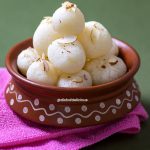Introduction:
Are you looking for a quick, flavorful, and comforting breakfast option? Look no further than Upma, a traditional South Indian dish that is as easy to make as it is delicious to eat. Upma is a savory semolina-based dish, often served with coconut chutney or a tangy sambar. In this food blog, we will guide you through a simple and homemade Upma recipe, along with some valuable tips to make your cooking experience even better.
What is Upma?
Upma is a popular Indian breakfast dish made from semolina (also known as sooji or rava). It is a versatile recipe that allows for various additions like vegetables, peanuts, and cashews, enhancing both its taste and nutritional value. This beloved dish is a great way to kick-start your day and keep you energized.
Ingredients:
To make this delightful Upma recipe, you’ll need the following ingredients:
- 1 cup semolina (rava/sooji)
- 2 tablespoons ghee or vegetable oil
- 1 teaspoon mustard seeds
- 1 teaspoon cumin seeds
- A pinch of asafoetida (hing)
- 1 medium-sized onion, finely chopped
- 1-2 green chilies, finely chopped (adjust to your spice preference)
- 1-inch ginger, grated
- 8-10 curry leaves
- 2-3 cups of water
- Salt to taste
- 1 tablespoon lemon juice (optional)
- 2 tablespoons chopped coriander leaves for garnish
Step-by-step Preparation:
1. Preparing the Semolina (rava/sooji):
- Dry roast the semolina (rava/sooji) in a pan over low to medium heat until it turns light golden and emits a nutty aroma. Set it aside.
2. Tempering the Spices:
- In a separate cooking pot or a deep pan, heat the ghee or vegetable oil.
- Add the mustard seeds and let them splutter. Follow it with the cumin seeds and asafoetida.
- Toss in the finely chopped onions, green chilies, grated ginger, and curry leaves. Sauté until the onions turn translucent.
3. Cooking the Upma:
- Carefully add the roasted semolina to the pan, mixing it with the tempered spices thoroughly.
- Now, pour in the water and add salt to taste. Stir the mixture gently to avoid lumps.
- Cover the pan with a lid and let it cook on low heat for about 4-5 minutes or until the semolina (rava/sooji) absorbs all the water and cooks through. You can add more water if you prefer a softer consistency.
- If desired, drizzle some lemon juice over the Upma for a tangy twist.
- Garnish the Upma with chopped coriander leaves.
Tips for a Perfect Upma:
- Roasting the semolina is a crucial step. It enhances the flavor and prevents the Upma from becoming sticky.
- For added nutrition, you can toss in some vegetables like carrots, peas, bell peppers, or tomatoes.
- Ensure the water-to-semolina ratio is appropriate to achieve the desired texture.
- Use ghee for a rich flavor, but if you prefer a vegan version, vegetable oil works perfectly well.
- Accompany your Upma with coconut chutney, sambar, or a simple pickle for an authentic South Indian experience.
Other Important Points:
- Upma can be served as a wholesome breakfast, brunch, or even a light dinner option.
- This versatile dish can be customized to suit your taste preferences, making it an ideal choice for both kids and adults.
- If you have leftovers, refrigerate them and reheat them in a pan or microwave. However, freshly cooked Upma tastes the best.
Conclusion:
With our easy-to-follow Upma recipe, you can now treat yourself to a warm and delectable South Indian delight. Experiment with various vegetables and spices to make it your own. Embrace the simplicity and flavors of this homemade Upma, and enjoy a delightful breakfast that keeps you coming back for more. Happy cooking!
Frequency Asked Questions (FAQ):
Q1. What is Upma?
Upma is a traditional South Indian breakfast dish made from semolina (rava/sooji) and tempered with spices. It is a flavorful and savory dish that can be customized with various ingredients like vegetables, nuts, and spices.
Q2. Is Upma a healthy breakfast option?
Yes, Upma can be a healthy breakfast choice. Semolina (rava/sooji) is a good source of carbohydrates, and when combined with vegetables and spices, it becomes a balanced meal. You can also opt for a whole wheat or multi-grain version for added nutritional benefits.
Q3. Can I make Upma without roasted semolina (rava/sooji)?
Roasting the semolina enhances its flavor and prevents it from becoming sticky during the cooking process. While it is possible to make Upma without roasting, we recommend dry roasting the semolina for the best taste and texture.
Q4. How can I customize my Upma?
Upma is incredibly versatile, allowing for numerous customizations. You can add vegetables like carrots, peas, bell peppers, or even tomatoes to make them more nutritious. Additionally, you can include roasted peanuts, cashews, or raisins for added texture and taste.
Q5. What can I serve with Upma?
Upma pairs well with coconut chutney, sambar (a lentil-based vegetable stew), or a simple pickle. These accompaniments complement the flavors of Upma and enhance your overall dining experience.
Q6. . Can I freeze Upma?
While Upma is best enjoyed fresh, it is not suitable for freezing. The texture and taste may not be as good after thawing and reheating.



